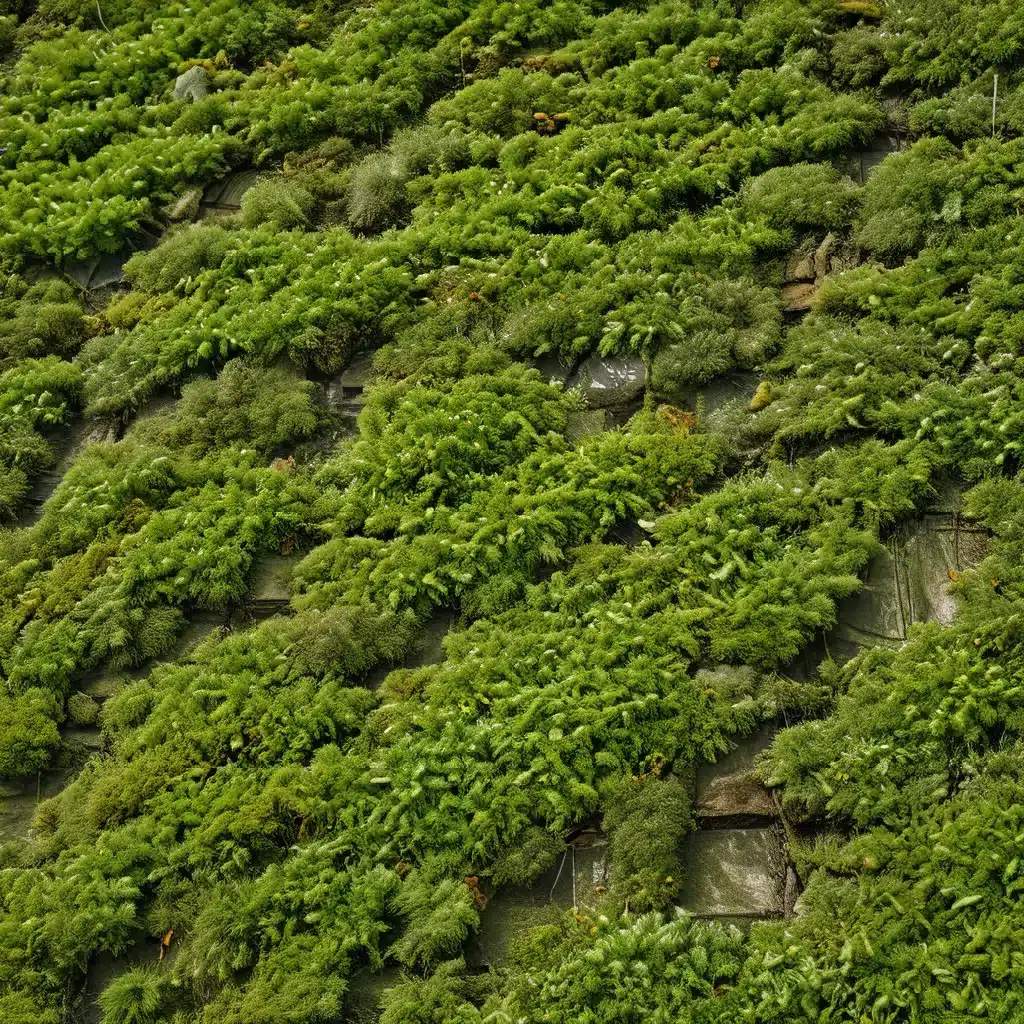
Ah, moss – that unassuming, soft green carpet that can transform even the most mundane roof into a quaint, almost picturesque sight. But don’t be fooled by its charming appearance, my friend. Underneath that calming verdant facade lies a hidden danger that can wreak havoc on the structural integrity of your home.
As a roofing expert with over 30 years of experience, I’ve seen firsthand the devastating effects that moss can have on roofs. It may look harmless, even endearing, but this sneaky little fungus is a formidable foe that can seriously compromise the health of your roof.
In this comprehensive guide, we’ll dive deep into the world of roof moss, exploring its insidious nature, the dangers it poses, and most importantly, how to identify and eradicate it before it’s too late. So, let’s get started, shall we?
Moss: The Sponge-Like Culprit
You see, moss operates much like a sponge, absorbing and retaining water, which can wreak havoc on your roof. As it accumulates, this extra weight puts excess strain on the roofing materials, potentially leading to damaged or missing shingles, cracks, and other structural issues.
But the real danger lies in the fact that a small roof leak caused by moss can quickly escalate into a much bigger problem. These pesky leaks are often difficult to detect, and by the time you notice them, the damage has already been done. We’re talking about water intrusion, wood rot, mold growth, and even electrical fires – the kind of problems that can seriously compromise the safety and integrity of your home.
Identifying the Culprit
So, how do you know if moss is the culprit behind your roofing woes? Keep an eye out for the following telltale signs:
- Soft, green, cushiony growth on the roof: This is the most obvious indication that moss has taken up residence on your roof.
- Discoloration or staining: Moss can leave behind unsightly discoloration or staining on your roofing materials.
- Cracks, missing shingles, or other structural damage: If you start to notice these issues, it’s a good sign that moss could be the root cause.
- Water retention and pooling: As moss absorbs and retains water, you may notice areas on your roof where water tends to accumulate.
Remember, the earlier you can identify and address the moss problem, the better. A small leak caused by moss can quickly turn into a much larger and more expensive issue, so it’s crucial to stay vigilant and act swiftly.
Preventing and Removing Roof Moss
Now that we’ve covered the dangers of roof moss, let’s talk about what you can do to prevent and remove this pesky invader. The good news is that with the right strategies, you can keep your roof moss-free and maintain its structural integrity for years to come.
Preventative Measures
Regular roof maintenance is key to keeping moss at bay. This includes:
- Clearing the roof of any debris: Be sure to remove leaves, twigs, and other organic matter that can provide a hospitable environment for moss growth.
- Trimming nearby trees and vegetation: Overhanging branches and foliage can create the perfect moist, shaded conditions for moss to thrive.
- Inspecting for wear and tear: Keep an eye out for damaged or missing shingles, cracks, and other structural issues that could allow water to penetrate and create the perfect conditions for moss growth.
- Hiring a professional roofer: Annual maintenance and inspections by a qualified roofing contractor can help identify and address any moss-related problems before they escalate.
Moss Removal
If moss has already taken hold on your roof, it’s time to take action. Here are some effective strategies for removing this pesky invader:
- Mechanical removal: Using a stiff-bristle brush or scraper, you can physically remove the moss from the roof. Be sure to take care not to damage the roofing materials in the process.
- Chemical treatments: There are specialized roof moss-killing products available that can be applied to the affected areas. These typically contain compounds like zinc or copper sulfate that are effective in eradicating moss.
- Power washing: In some cases, a high-powered pressure washer can be used to blast away the moss. However, this method requires caution to avoid damaging the roofing materials.
Regardless of the approach you choose, it’s crucial to address the root cause of the moss problem. This means addressing any underlying issues like poor drainage, excessive shade, or structural damage that may be creating the ideal conditions for moss to thrive.
Protecting Your Home’s Future
Your roof is one of the most critical components of your home, serving as the first line of defense against the elements. Allowing moss to take hold and wreak havoc on this vital structure can lead to a cascade of expensive and potentially dangerous problems.
Regular maintenance, diligent inspection, and prompt action when it comes to moss removal are essential for preserving the long-term health and integrity of your roof. After all, a moss-free roof is not just about aesthetics – it’s about safeguarding your home and your family for years to come.
So, don’t let moss catch you off guard. Stay vigilant, stay proactive, and enlist the help of a trusted roofing professional if needed. With the right strategies in place, you can keep your roof in tip-top shape and enjoy the peace of mind that comes with a well-protected home.
Remember, a healthy roof is the foundation of a happy home. So, let’s work together to banish those pesky green invaders and ensure your roof stands strong against the elements for years to come.
Southern Roofing Company is here to help you every step of the way. Whether you need assistance with identifying and removing moss, or you’re looking to proactively maintain your roof, our team of experts is ready to lend a hand. Don’t hesitate to reach out and let us help you protect the integrity of your home.